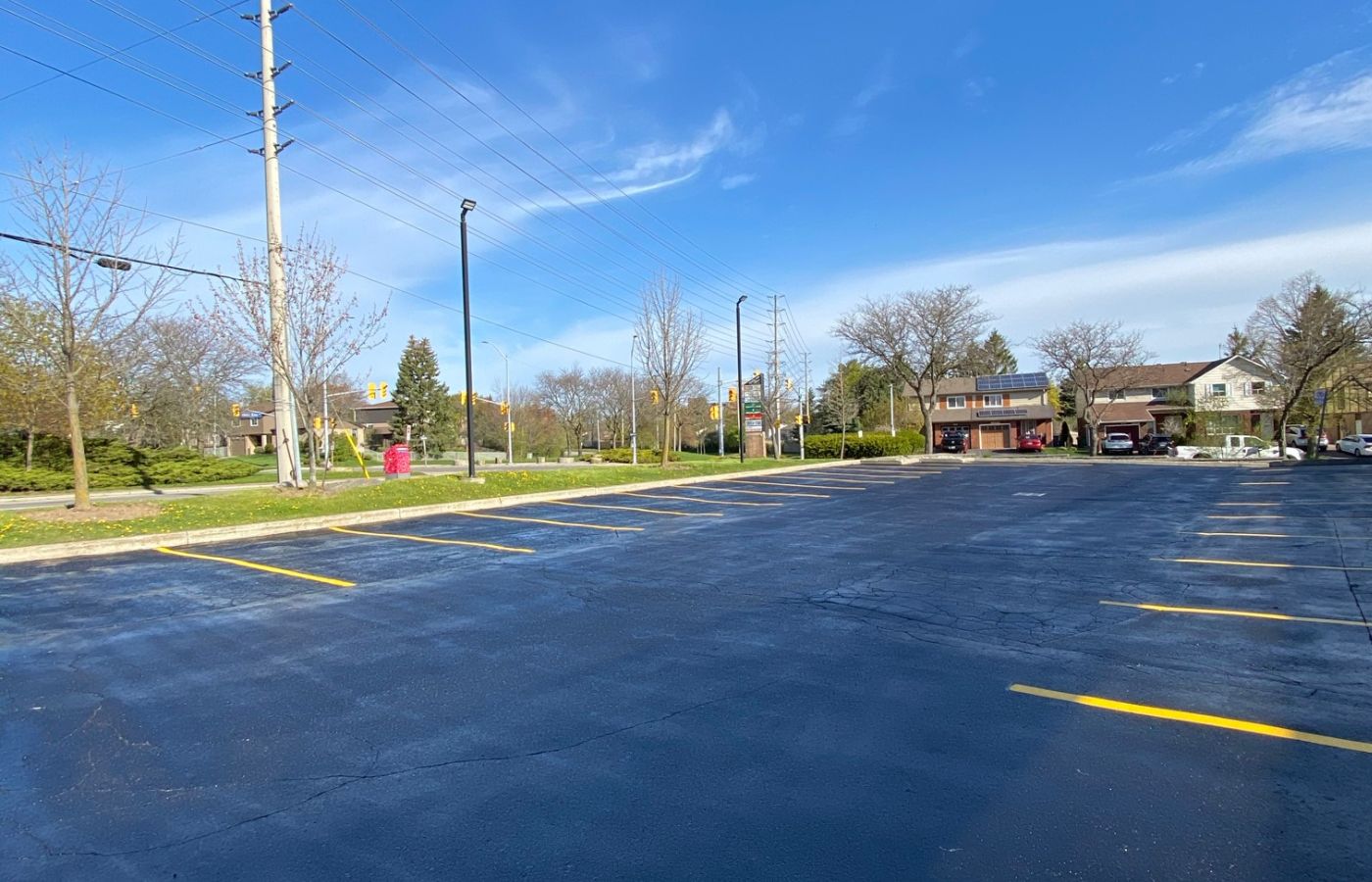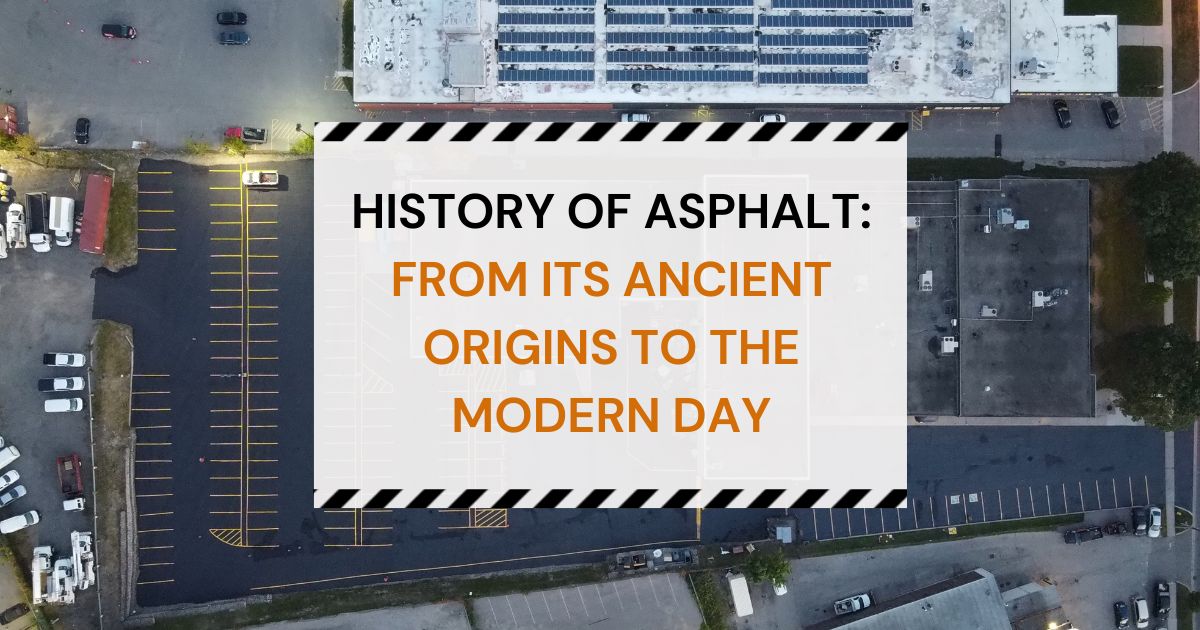Before your next walk down a sidewalk, drive on a road, or stroll across a playground, consider what is beneath your feet. More than likely, you’re walking on an asphalt pavement, a material so commonplace that we don’t even think about it. However, the history of asphalt and the way it has been a shaper of human civilization for thousands of years is more interesting than one might think. It has travelled across continents, cultures, and centuries, from ancient canals and pyramids to today’s highways and smart roads.
The Evolution Of Asphalt
1. Asphalt In Ancient Times
You might be surprised to learn that asphalt is much older than most people think, but it is also a material that has kept up with the times. Humans have been using it for thousands of years, and ancient societies quickly realized just how useful it could be.
- Mesopotamia: Around 6000 BC, people discovered that natural asphalt could seal water containers and waterproof canals. It was a simple solution to a big problem, and it worked really well.
- Egypt: Asphalt played a role in building the Great Pyramids. The Egyptians also used it in embalming because it helped preserve mummies for centuries.
- Greece and Rome: Engineers in these civilizations used asphalt in roads, aqueducts, and drainage systems. Roman roads were built to last, and asphalt helped make that happen.
Even without modern science, people understood that asphalt was flexible, durable, and reliable. It was a material they could count on for practical solutions.
2. Asphalt In The Middle Ages
After the fall of ancient empires, asphalt use decreased in some parts of Europe. Roads were mainly cobblestone or gravel. In other regions, asphalt continued to be important.
In the Middle East, natural asphalt from the Dead Sea was used to waterproof boats, seal buildings, and make adhesives.
In Europe, asphalt appeared occasionally in roofs and walls. It was not everywhere, but it quietly did its job wherever durability mattered.
Even in quieter times, asphalt stayed useful and practical.
3. Asphalt In The 1800s
Everything changed in the 19th century. People sought smoother roads as cities grew and traffic increased. Asphalt proved to be the ideal remedy.
- Paris, 1855: The first asphalt-paved streets appeared. People noticed immediately that walking or driving was easier than on cobblestones.
- London and New York: Both cities quickly followed, paving streets with asphalt to improve transportation.
- Engineering Advances: Chemists and engineers found ways to refine asphalt and standardize its use. Roads became stronger and could handle more traffic.
By the late 1800s, asphalt was everywhere. Roads were smoother, cities grew faster, and infrastructure became more reliable.

4. Asphalt In The 20th Century
Once cars started becoming a common sight, asphalt suddenly became a big deal. It was no longer just for streets in town. Highways, airports, and industrial areas all needed it to keep up with the pace of modern life.
Highways and freeways suddenly felt smooth and reliable, making long drives easier and safer.
Then came the technology upgrades. Things like cold vs hot mix asphalt, polymer additives, and mechanized paving equipment meant roads could handle more traffic and last much longer. No more constant patching and potholes everywhere.
And cities? Asphalt was a game-changer. It allowed urban areas to expand without falling apart under heavy vehicles or constant use. Rain, snow, or scorching sun, asphalt held up and let cities grow efficiently. At this point, asphalt was critical to modern life.
5. Asphalt Today
Modern asphalt continues to evolve. Sustainability, performance, and technology are shaping new uses.
- Eco-Friendly Practices: Recycled asphalt pavement, warm-mix asphalt, and green additives reduce environmental impact while maintaining durability.
- Smart Roads: Researchers are experimenting with asphalt that absorbs sunlight, reduces noise, or helps charge electric vehicles.
- Urban Solutions: Porous asphalt helps manage stormwater and reduce flooding, making cities more resilient.
From ancient canals to sealing parking lots, asphalt paving is still proving its value every day.
Fun Facts About Asphalt
- The La Brea Tar Pits in California are natural asphalt deposits that have preserved fossils for tens of thousands of years.
- Asphalt roads can last 20 years or more with proper maintenance.
- Some of the world’s longest highways, like the Pan-American Highway, are paved with asphalt.
- Modern asphalt can include recycled rubber, plastic, and other materials, making it easy to use.
Asphalt is pretty amazing when you think about it. It is affordable, tough, and can be used in so many ways. Over thousands of years, it has changed to meet human needs, from sealing ancient canals to paving modern highways.
The next time you drive on a freshly paved road or walk along a sidewalk, take a moment to think about what is under your feet. Asphalt is more than black pavement. It carries the story of thousands of years of innovation, resilience, and human ingenuity. Every road has a story to tell about the effort people have put into building stronger and more reliable infrastructure.




